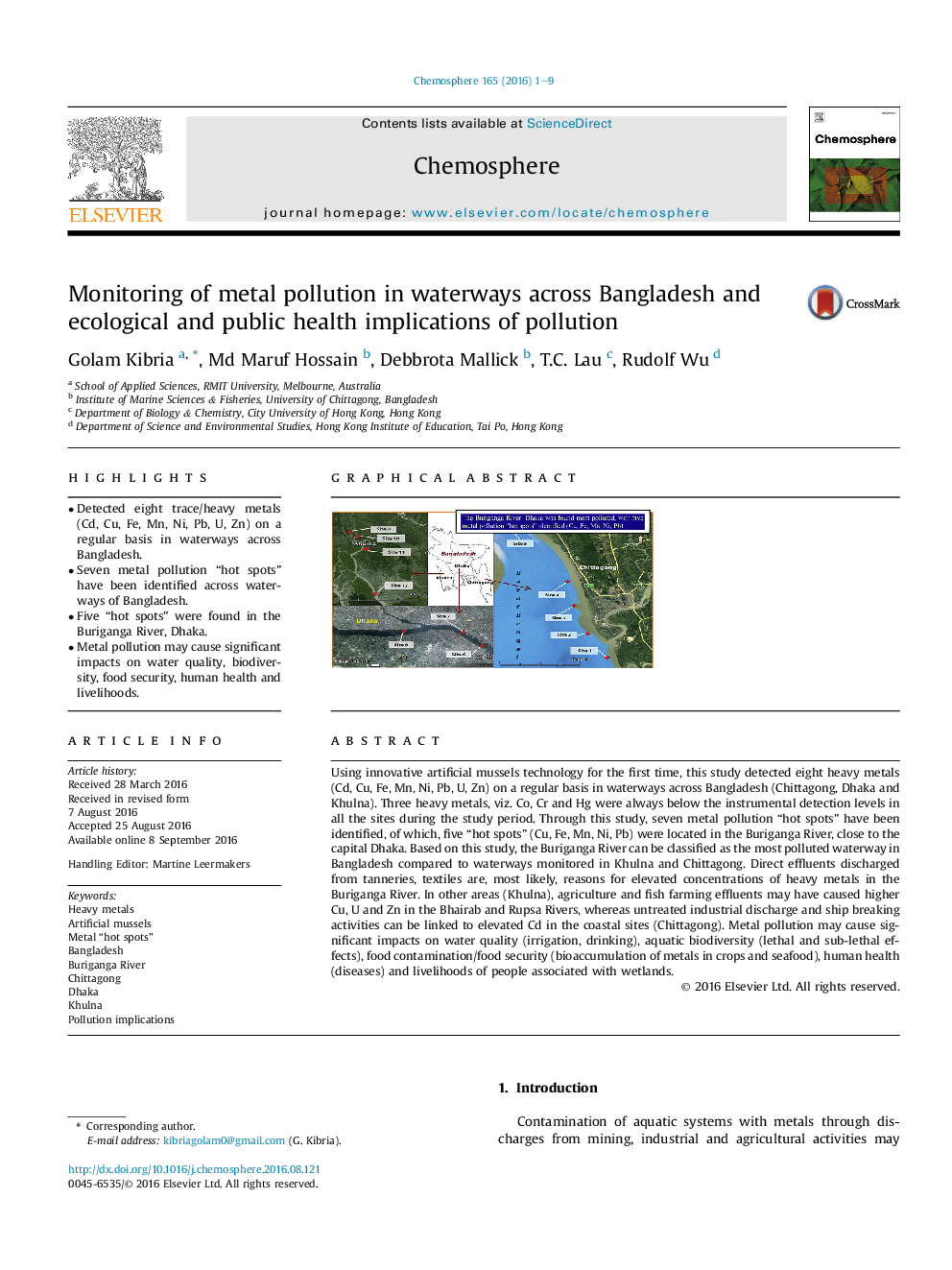| کد مقاله | کد نشریه | سال انتشار | مقاله انگلیسی | نسخه تمام متن |
|---|---|---|---|---|
| 4407285 | 1618806 | 2016 | 9 صفحه PDF | دانلود رایگان |
• Detected eight trace/heavy metals (Cd, Cu, Fe, Mn, Ni, Pb, U, Zn) on a regular basis in waterways across Bangladesh.
• Seven metal pollution “hot spots” have been identified across waterways of Bangladesh.
• Five “hot spots” were found in the Buriganga River, Dhaka.
• Metal pollution may cause significant impacts on water quality, biodiversity, food security, human health and livelihoods.
Using innovative artificial mussels technology for the first time, this study detected eight heavy metals (Cd, Cu, Fe, Mn, Ni, Pb, U, Zn) on a regular basis in waterways across Bangladesh (Chittagong, Dhaka and Khulna). Three heavy metals, viz. Co, Cr and Hg were always below the instrumental detection levels in all the sites during the study period. Through this study, seven metal pollution “hot spots” have been identified, of which, five “hot spots” (Cu, Fe, Mn, Ni, Pb) were located in the Buriganga River, close to the capital Dhaka. Based on this study, the Buriganga River can be classified as the most polluted waterway in Bangladesh compared to waterways monitored in Khulna and Chittagong. Direct effluents discharged from tanneries, textiles are, most likely, reasons for elevated concentrations of heavy metals in the Buriganga River. In other areas (Khulna), agriculture and fish farming effluents may have caused higher Cu, U and Zn in the Bhairab and Rupsa Rivers, whereas untreated industrial discharge and ship breaking activities can be linked to elevated Cd in the coastal sites (Chittagong). Metal pollution may cause significant impacts on water quality (irrigation, drinking), aquatic biodiversity (lethal and sub-lethal effects), food contamination/food security (bioaccumulation of metals in crops and seafood), human health (diseases) and livelihoods of people associated with wetlands.
Figure optionsDownload as PowerPoint slide
Journal: Chemosphere - Volume 165, December 2016, Pages 1–9
